What Are Educational Toys – Featuring Best Preschoolers Educational Toy
Contents
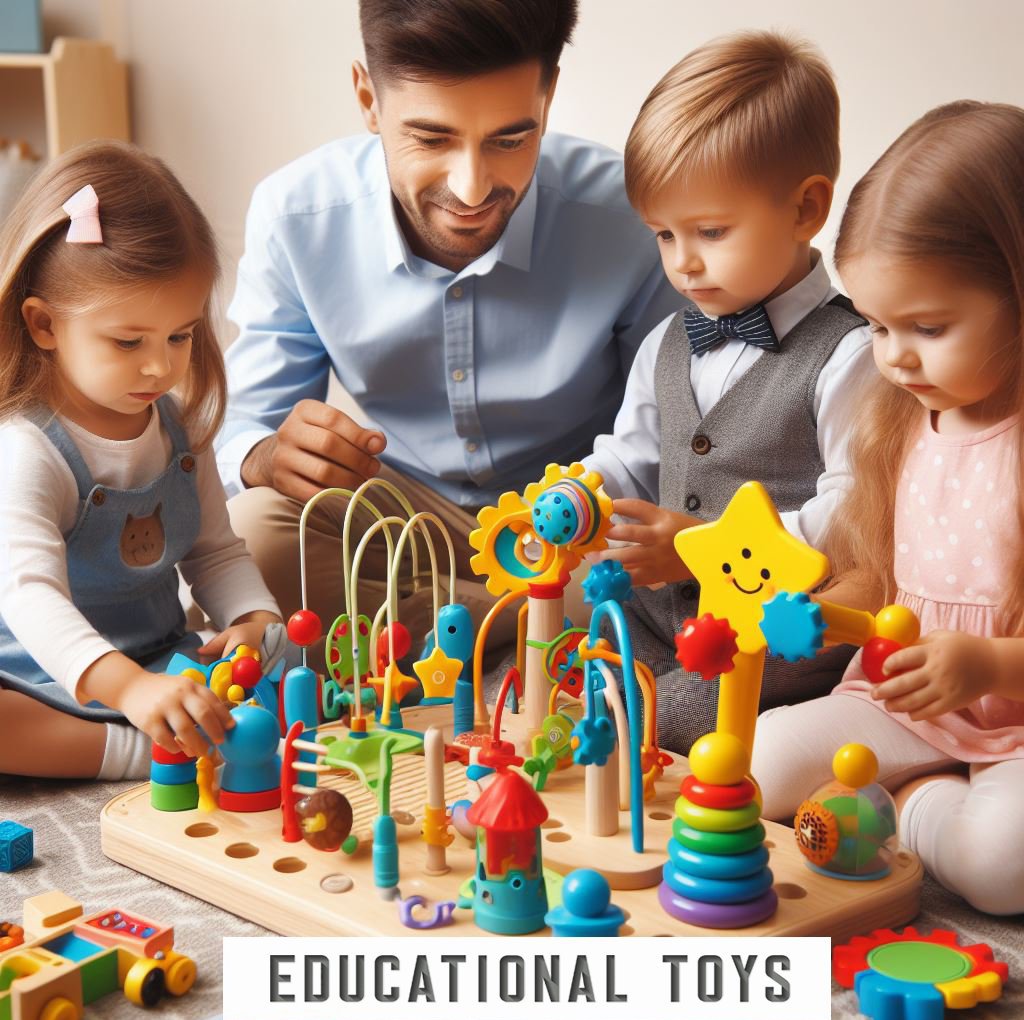
| What Are Educational Toys? | Why Are They Important? | What Are The Types Of Educational Toys? | What Are The Best Educational Toys For Preschoolers? |
|---|---|---|---|
| Educational toys are toys that stimulate learning and development in children. | They are important because they enhance cognitive, physical, social, and emotional skills in children. | We featured 4 main types of educational toys in this article namely: Building toys, Puzzles and games, Books and crafts, and Electronic gadgets. | The best educational toys for preschoolers include Inflatable balls and soft footballs, Lego blocks and building blocks, Stacking cups and threading and sewing kits, Magic shaker pictures and maze kraze, and Hand puppets and finger puppets. |
Introduction
What are educational toys and why are they important for children’s development? This is a question that many parents, educators, and toy makers ask themselves and each other. Educational toys are toys that stimulate learning and development in children, by challenging their minds, bodies, emotions, and social skills.
These toys can help children acquire new knowledge, skills, and abilities, as well as enhance their existing ones. They can also foster creativity, curiosity, imagination, and problem-solving skills in children.
Benefits Of Educational Toys For Children
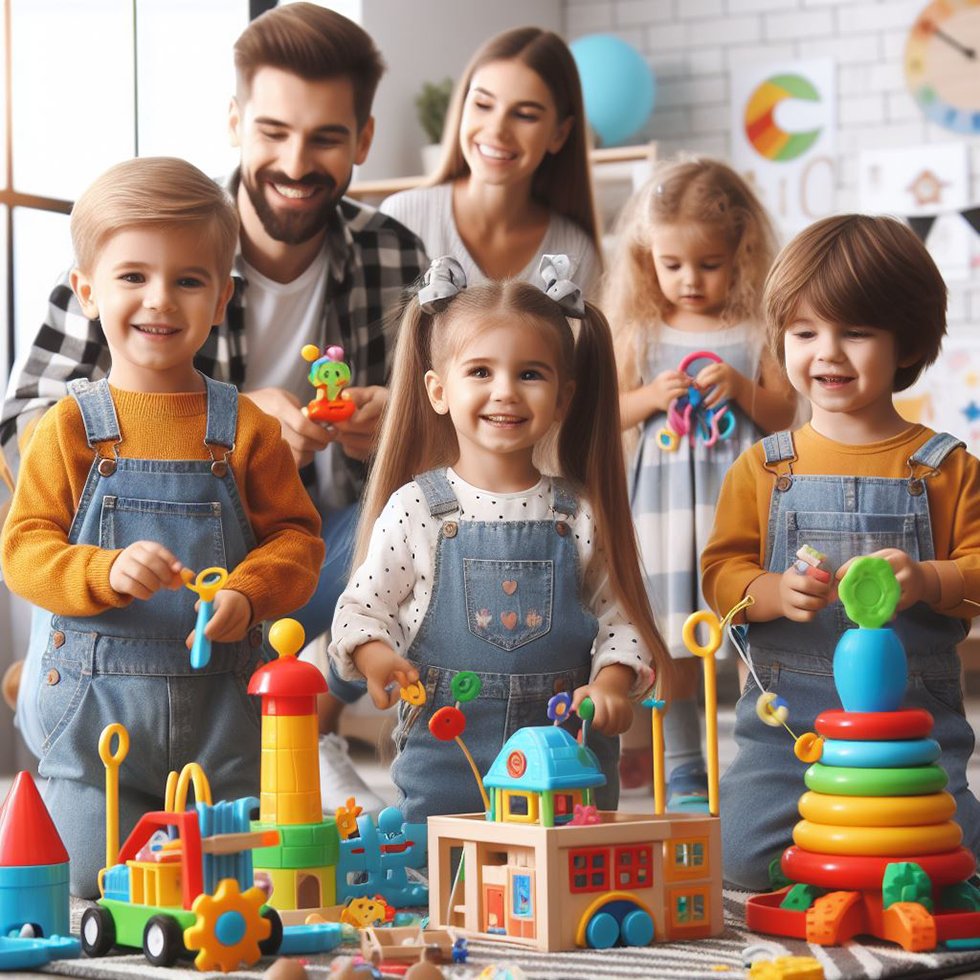
- They enhance fine motor skills, which are the coordination of small muscles in the hands and fingers. Fine motor skills are essential for tasks such as writing, drawing, cutting, and tying.
- They improve hand-eye coordination, which is the ability to coordinate the movements of the eyes and hands. Hand-eye coordination is important for activities such as catching, throwing, and hitting.
- They develop object permanence, which refers to the concept that objects maintain their existence even when they are no longer within the immediate line of sight. This is a key milestone in cognitive development, as it helps children form mental representations of the world.
- They boost STEM skills, which are the skills related to science, technology, engineering, and mathematics. STEM skills are crucial for the future, as they prepare children for the demands of the 21st century.
- They increase language skills, which are the skills related to speaking, listening, reading, and writing. Language skills are vital for communication, expression, and comprehension.
- They promote social skills, which are the skills related to interacting with others. Social skills are necessary for forming and maintaining relationships, as well as cooperating and collaborating with others.
- They nurture emotional skills, which are the skills related to recognizing, managing, and expressing emotions. Emotional skills are important for emotional well-being, self-regulation, and empathy.
History of Educational Toys
The history of educational toys is a fascinating and rich one, as it reflects the evolution of human thought, culture, and technology. Educational toys have been around for centuries, and they have been influenced by various philosophical, pedagogical, and scientific movements and innovations.
One of the earliest advocates of learning through play was John Locke. Locke believed that children were born with a blank slate and that their education should be based on their natural curiosity and interests. He suggested that children should be given toys that stimulate their senses, such as rattles, balls, and dolls, and that they should be encouraged to explore and experiment with them.
Another notable figure in the history of educational toys was Maria Montessori, an Italian educator and physician who lived in the 19th and 20th centuries. Montessori developed a revolutionary method of education, called the Montessori method, which was based on the observation and respect of the child’s natural tendencies and abilities. She designed and created a variety of educational materials, called Montessori materials, which included wooden blocks, cylinders, rods, beads, letters, and numbers.
One of the most innovative figures in the history of educational toys was A. C. Gilbert. Gilbert, who was also a magician and an Olympic gold medalist, created a metal construction toy that allowed children to build various models and structures, such as bridges, cranes, and skyscrapers.
Types Of Educational Toys
There are many types of educational toys, and they can be categorized according to their functions and features. These include:
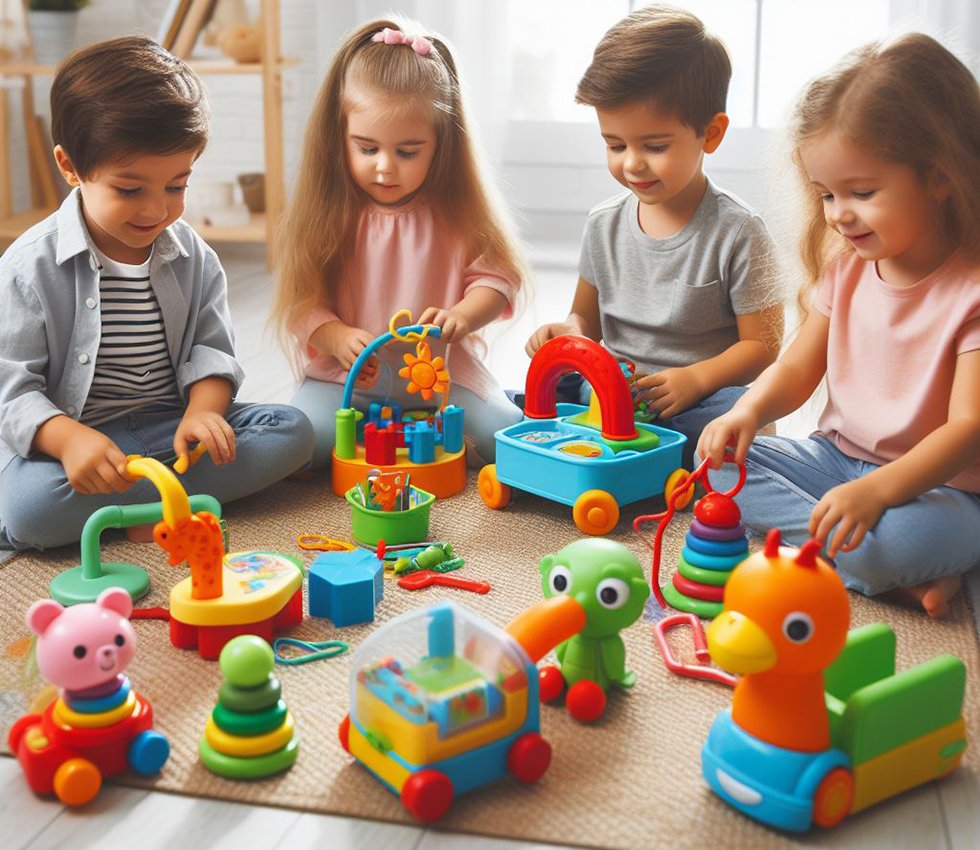
Building Toys
Building toys are educational toys that allow children to construct various shapes and models using different materials and components. Building toys can enhance children’s cognitive, physical, and creative skills, such as:
- Spatial awareness is the ability to perceive and manipulate objects and shapes in space. Spatial awareness is important for tasks such as geometry, engineering, and architecture.
- Logical thinking, which is the ability to reason and solve problems using facts and rules. Logical thinking is important for tasks such as mathematics, science, and programming.
- Creativity, which is the ability to generate and express original and novel ideas. Creativity is important for tasks such as art, design, and innovation.
Some examples of building toys are:
- Lego blocks, which are plastic interlocking bricks that can be used to build endless combinations of shapes and models. Lego blocks are one of the most popular and versatile building toys, as they can be used to create anything from simple houses and cars to complex robots and spaceships. Lego blocks also come in different themes and sets, such as Lego Classic, Lego City, Lego Star Wars, Lego Harry Potter, and Lego Technic, which cater to different interests and preferences of children.
- Building blocks, which are wooden or plastic cubes or rectangles that can be stacked and arranged to form various structures and patterns. Building blocks are one of the most basic and classic building toys, as they are good in helping children develop their fine motor skills, hand-eye coordination, and spatial awareness. Building blocks also come in different colors, sizes, and shapes, such as alphabet blocks, number blocks, and shape blocks, which can help children learn about letters, numbers, and geometry.
- Stacking cups, which are plastic or metal cups that can be nested and stacked to form towers and pyramids. Stacking cups are one of the most simple and fun building toys, they can help children develop their fine motor skills, hand-eye coordination, and object permanence. Stacking cups also come in different colors, sizes, and designs, such as rainbow cups, animal cups, and musical cups, which can help children learn about colors, animals, and sounds.
- Threading and sewing kits, which are sets of beads, buttons, laces, needles, and fabrics that can be threaded and sewed to create various shapes and models. Threading and sewing kits are some of the most creative and artistic building toys, they also help children develop their fine motor skills, hand-eye coordination, and creativity. Threading and sewing kits also come in different themes and styles, such as animals, flowers, and dolls, which can help children express their personalities and preferences.
- Puzzle sticks, which are wooden or plastic sticks that can be connected and twisted to form various shapes and models. Puzzle sticks are one of the most challenging and stimulating building toys, they can help children develop their logical thinking, spatial awareness, and problem-solving skills. Puzzle sticks also come in different colors, sizes, and levels of difficulty, such as easy, medium, and hard, which can help children challenge themselves and improve their skills.
- 3D craft construction kits, which are sets of cardboard, paper, foam, or plastic pieces that can be cut, folded, and glued to form various shapes and models. 3D craft construction kits are one of the most innovative and educational building toys, they help children develop their creativity, spatial awareness, and STEM skills. 3D craft construction kits also come in different themes and subjects, such as animals, vehicles, and planets, which can help children learn about the world and its wonders.
Puzzles And Games
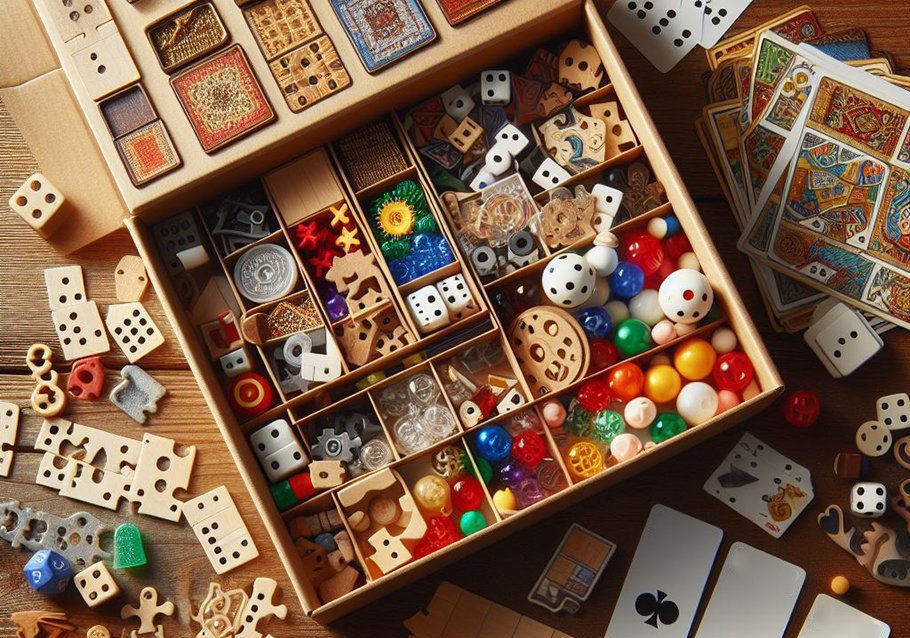
Puzzles and games are educational toys that require children to use their logic, strategy, memory, and intuition to solve problems and achieve goals. Puzzles and games can enhance children’s cognitive, social, and emotional skills, such as:
- Problem-solving, which is the ability to find solutions to challenges and difficulties. Problem-solving is important for tasks such as science, engineering, and business.
- Strategy, which is the ability to plan and execute actions to achieve objectives. Strategy is important for tasks such as chess, war, and politics.
- Memory, which is the ability to store and recall information. Memory is important for tasks such as history, language, and music.
- Intuition, which is the ability to make decisions based on instinct and experience. Intuition is important for tasks such as art, psychology, and spirituality.
Some examples of puzzles and games are:
- Magic shaker pictures, which are plastic containers filled with sand and glitter that reveal hidden pictures when shaken. Magic shaker pictures are one of the most simple and fun puzzles, they are useful in helping children to develop their visual perception, attention, and curiosity. Magic shaker pictures also come in different themes and images, such as animals, flowers, and letters, which can help children learn about the world and its wonders.
- Maze kraze, which are wooden or plastic boards with grooves and holes that contain a metal ball that can be moved by tilting the board. Maze kraze is one of the most challenging and stimulating puzzles, as it can help children develop their hand-eye coordination, spatial awareness, and problem-solving skills. Maze kraze also come in different shapes, sizes, and levels of difficulty, such as circular, rectangular, and hexagonal, which can help children challenge themselves and improve their skills.
- Hand puppets, which are fabric or plastic dolls that can be worn on the hand and moved by the fingers. Hand puppets are one of the most creative and expressive games, they help children in developing their language skills, imagination, and emotions. Hand puppets also come in different characters and personalities, such as animals, people, and monsters, which can help children create and tell stories and scenarios.
- Finger puppets, which are similar to hand puppets, but smaller and worn on the fingers. Finger puppets are one of the most adorable and amusing games. They can help children develop their fine motor skills, communication, and humor. Finger puppets also come in different shapes and colors, such as fruits, vegetables, and flowers, which can help children learn about nature and its diversity.
- Dress-up costumes, which are sets of clothes and accessories that can be worn to pretend to be someone or something else. Dress-up costumes are one of the most fun and exciting games, as they can help School-aged children develop their social skills, creativity, and identity. Dress-up costumes also come in different themes and styles, such as superheroes, princesses, and pirates, which can help children explore and express their interests and preferences.
- Puzzle sticks, which are wooden or plastic sticks that can be connected and twisted to form various shapes and models. Puzzle sticks are one of the most innovative and educational games, they help children develop their logical thinking, spatial awareness, and STEM skills. Puzzle sticks also come in different colors, sizes, and levels of difficulty, such as easy, medium, and hard, which can help children challenge themselves and improve their skills.
Books And Crafts
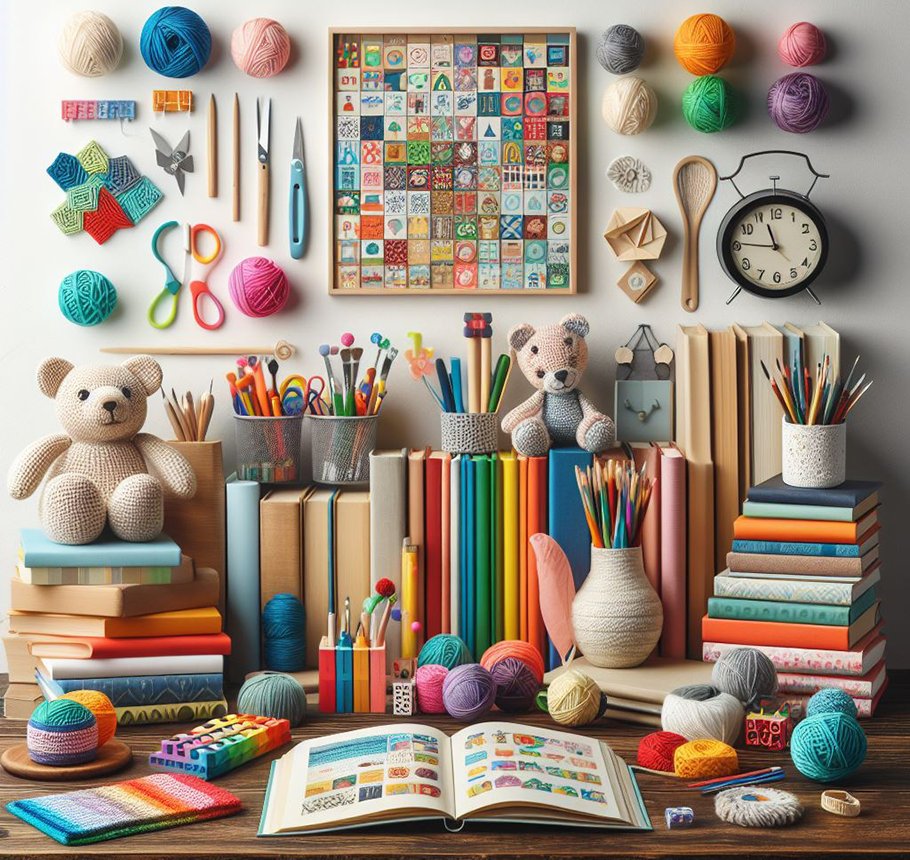
Books and crafts are educational toys that involve reading, writing, drawing, painting, and making various objects and artworks. Books and crafts can enhance children’s cognitive, linguistic, and artistic skills, such as:
- Reading comprehension, which is the ability to understand and interpret written texts. Reading comprehension is important for tasks such as literature, history, and philosophy.
- Writing expression, which is the ability to produce and communicate written texts. Writing expression is important for tasks such as language, journalism, and poetry.
- Drawing and painting, which are the abilities to create and appreciate visual arts. Drawing and painting are important for tasks such as art, design, and aesthetics.
- Making and crafting, which are the abilities to create and appreciate various objects and artworks. Making and crafting are important for tasks such as engineering, architecture, and handicraft.
Some examples of books and crafts are:
- Colouring books, which are books that contain outlines of pictures that can be filled with colors. Coloring books are one of the most simple and relaxing books and crafts, they can help children develop their fine motor skills, attention, and creativity. Coloring books also come in different themes and images, such as animals, flowers, and letters, which can help children learn about the world and its wonders.
- Fiesta crafts, which are sets of materials and instructions that can be used to make various objects and artworks, such as masks, puppets, and magnets. Fiesta crafts are one of the most fun and festive books and crafts because they can help children develop their fine motor skills, imagination, and emotions. Fiesta crafts also come in different themes and styles, such as animals, people, and monsters, which can help children create and tell stories and scenarios.
- Educational books, which are books that contain information and activities that can teach children various subjects and skills, such as science, math, and language. Educational books are one of the most informative and useful books and crafts, they can help children develop their reading comprehension, writing expression, and knowledge. Educational books also come in different formats and levels, such as storybooks, workbooks, and reference books, which can help children learn at their own pace and level.
- Art kits, which are sets of tools and materials that can be used to draw and paint various shapes and models, such as animals, vehicles, and landscapes. Art kits are one of the most creative and expressive books and crafts and they help children develop their drawing and painting skills, creativity, and emotions. Art kits also come in different types and mediums, such as pencils, crayons, markers, and paints, which can help children experiment and explore with different colors and textures.
- Craft kits, which are similar to art kits, but involve making and crafting various objects and artworks, such as jewelry, cards, and stickers. Craft kits are one of the most innovative and educational books and crafts, they can help children develop their making and crafting skills, creativity, and STEM skills. Craft kits also come in different types and materials, such as beads, paper, foam, and clay, which can help children create and appreciate different shapes and forms.
Electronic Gadgets
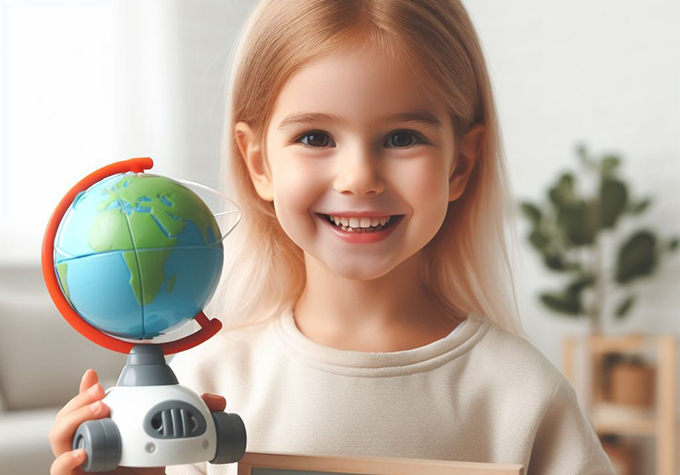
Electronic gadgets are educational toys that use electricity, electronics, and technology to perform various functions and features. Electronic gadgets can enhance children’s cognitive, technical, and digital skills, such as:
- Computing, which is the ability to use and program computers and software. Computing is important for tasks such as coding, gaming, and data analysis.
- Electronics, which is the ability to use and create electronic circuits and devices. Electronics is important for tasks such as engineering, robotics, and automation.
- Technology, which is the ability to use and create various tools and machines that use electricity, electronics, and other forms of energy. Technology is important for tasks such as innovation, invention, and exploration.
Some examples of electronic gadgets are:
- Educational toys lab, which is a website that offers various interactive and educational toys and games that use electricity, electronics, and technology. Educational toys lab is one of the most cutting-edge and eco-friendly electronic gadgets, as it can help children develop their computing, electronics, and technology skills. Educational toys lab also offers various themes and subjects, such as science, math, and art, which can help children learn about the world and its wonders.
- Learning apps, which are applications that can be downloaded and installed on smartphones, tablets, or computers that can teach children various subjects and skills, such as language, music, and logic. Learning apps are one of the most convenient and accessible electronic gadgets, as they can help children develop their reading comprehension, writing expression, and knowledge. Learning apps also come in different formats and levels, such as games, quizzes, and stories, which can help children learn at their own pace and level.
- Raspberry Pi, which is a low-cost and compact computer that can be used to code and create various projects and devices, such as games, robots, and cameras. Raspberry Pi is one of the most innovative and educational electronic gadgets, as it can help children develop their computing, electronics, and technology skills. Raspberry Pi also comes with various accessories and resources, such as keyboards, monitors, and books, which can help children experiment and explore with different possibilities and opportunities.
- Geniac, which is an electric brain machine that can be used to perform various calculations and operations, such as addition, subtraction, multiplication, division, and Boolean algebra. Geniac is one of the most challenging and fascinating electronic gadgets, as it can help children develop their computing, logic, and programming skills. Geniac also comes with various switches, light bulbs, and wires, which can help children create and understand various circuits and algorithms.
- Theseus, which is a magnetic mouse that can be used to solve mazes and demonstrate artificial intelligence. Theseus is one of the most advanced and impressive electronic gadgets, as it can help children develop their technology, problem-solving, and intuition skills. Theseus also comes with a relay circuit, a magnet, and a metal mouse, which can help children create and appreciate various principles and applications of artificial intelligence.
Best Preschoolers Educational Toys
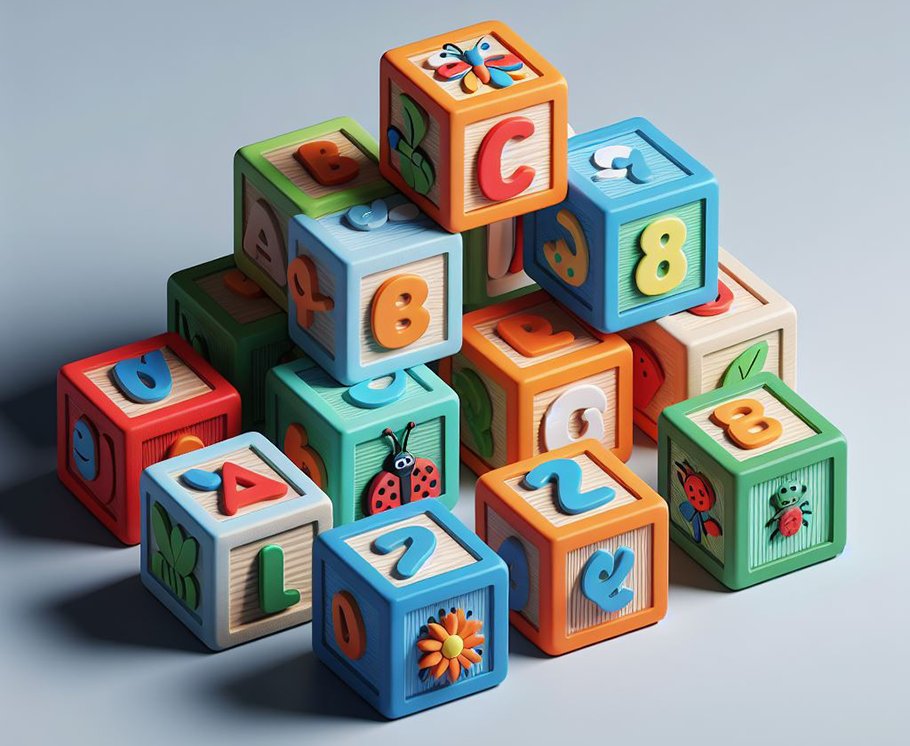
Preschoolers are children who are between the ages of 3 and 5 years old. They are curious, playful, and eager to learn. They also have different needs and abilities than older or younger children.
Therefore, they need educational toys that are suitable for their age, interest, and skill level. Here are some of the best educational toys for preschoolers:
1. Inflatable Balls And Soft Footballs
Inflatable balls and soft footballs are educational toys that can be used to play various games and sports, such as catch, throw, kick, and bounce. They can enhance preschoolers’ physical, social, and emotional skills, such as:
- Gross motor skills, which are the coordination of large muscles in the arms, legs, and torso. Gross motor skills are essential for tasks such as running, jumping, and climbing.
- Social skills, which are the skills related to interacting with others. Social skills are necessary for forming and maintaining relationships, as well as cooperating and collaborating with others.
- Emotional skills, which are the skills related to recognizing, managing, and expressing emotions. Emotional skills are important for emotional well-being, self-regulation, and empathy.
Some examples of inflatable balls and soft footballs are:
- Inflatable balls, which are plastic or rubber balls that can be inflated and deflated with air. Inflatable balls are one of the most simple and fun educational toys. They can help preschoolers develop their gross motor skills, hand-eye coordination, and object permanence. Inflatable balls also come in different colors, sizes, and shapes, such as round, oval, and star, which can help preschoolers learn about colors, shapes, and geometry.
- Soft footballs, which are similar to inflatable balls, but made of soft and flexible materials, such as foam, fabric, or rubber. Soft footballs are one of the most exciting and stimulating educational toys, they can help preschoolers develop their gross motor skills, social skills, and emotional skills. Soft footballs also come in different colors, sizes, and designs, such as plain, striped, or patterned, which can help preschoolers express their personalities and preferences.
Some pros and cons of inflatable balls and soft footballs are:
- Pros:
- They are easy to use and store, as they can be inflated and deflated with air, and folded and packed when not in use.
- They are safe and durable, as they are made of high-quality and sturdy materials, such as plastic, rubber, foam, fabric, or rubber, which can withstand more wear and tear.
- They are affordable and accessible, as they are relatively cheap and widely available on various online and offline platforms, such as Young & Learning Ltd., a leading manufacturer and distributor of educational toys for children.
- Cons:
- They may pose a choking or injury hazard for Preschoolers, if they are punctured, torn, or bitten, as they may release small parts or toxic materials.
- They may lose their shape or function over time if they are overinflated, underinflated, or exposed to extreme temperatures or pressures, as they may burst, leak, or deform.
- They may not be suitable for all preschoolers, as some may have allergies or sensitivities to certain materials, such as latex, rubber, or foam, or may prefer other types of balls, such as hard, bouncy, or fuzzy balls.
2. Lego Blocks And Building Blocks
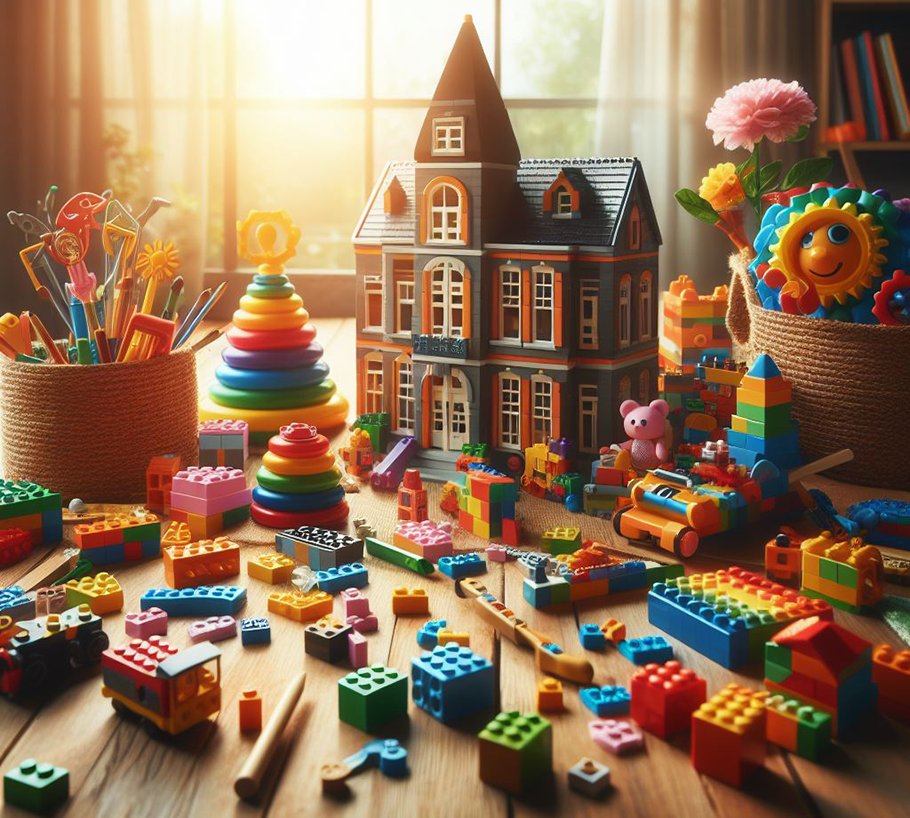
Lego blocks and building blocks are educational toys that allow children to construct various shapes and models using different materials and components. They can enhance preschoolers’ cognitive, physical, and creative skills, such as:
- Spatial awareness, which is the ability to perceive and manipulate objects and shapes in space.
- Logical thinking, which is the ability to reason and solve problems using facts and rules.
- Creativity, which is the ability to generate and express original and novel ideas.
Some examples of Lego blocks and building blocks are:
- Lego blocks, which are plastic interlocking bricks that can be used to build endless combinations of shapes and models.
- Building blocks, which are wooden or plastic cubes or rectangles that can be stacked and arranged to form various structures and patterns.
Some pros and cons of Lego blocks and building blocks are:
- Pros:
- They are versatile and expandable, as they can be used to create different shapes and models, and can be combined and integrated with other building toys.
- They are safe and durable, as they are made of high-quality and sturdy materials, such as plastic, wood, or metal, which can withstand more wear and tear.
- They are popular and reputable, as they are produced and marketed by Lego, the world’s largest toy company and a pioneer in educational toys.
- Cons:
- They may pose a choking or injury hazard for preschoolers, if they are swallowed, stepped on, or thrown, as they have small parts and sharp edges.
- They may lose their shape or function over time if they are exposed to extreme temperatures or pressures, as they may melt, crack, or deform.
- They may not be suitable for all preschoolers, as some may have allergies or sensitivities to certain materials, such as plastic, wood, or metal, or may prefer other types of building toys, such as soft, bouncy, or fuzzy toys.
3. Stacking Cups And Threading And Sewing Kits
Stacking cups and threading and sewing kits are educational toys that involve stacking, nesting, and threading various materials and components. They can enhance preschoolers’ cognitive, physical, and creative skills, such as:
- Fine motor skills, which are the coordination of small muscles in the hands and fingers.
- Hand-eye coordination, which is the ability to coordinate the movements of the eyes and hands.
- Object permanence, which is the understanding that objects continue to exist even when they are out of sight.
Some examples of stacking cups and threading and sewing kits are:
- Stacking cups, which are plastic or metal cups that can be nested and stacked to form towers and pyramids.
- Threading and sewing kits, which are sets of beads, buttons, laces, needles, and fabrics that can be threaded and sewed to create various shapes and models.
Some pros and cons of stacking cups and threading and sewing kits are:
- Pros:
- They are simple and fun, and help preschoolers develop their fine motor skills, hand-eye coordination, and object permanence.
- They are safe and durable, as they are made of high-quality and sturdy materials, such as plastic, metal, or fabric, which can withstand more wear and tear.
- They are affordable and accessible, as they are relatively cheap and widely available in various online and offline platforms, such as Fiesta Crafts, a family-owned and award-winning British company that specializes in traditional and innovative toys and gifts.
- Cons:
- They may pose a choking or injury hazard for preschoolers, if they are swallowed, poked, or cut, as they have small parts or sharp edges.
- They may lose their shape or function over time if they are exposed to extreme temperatures or pressures, as they may melt, crack, or deform.
- They may not be suitable for all preschoolers, as some may have allergies or sensitivities to certain materials, such as plastic, metal, or fabric, or may prefer other types of stacking and threading toys, such as wooden, foam, or rubber toys.
4. Magic Shaker Pictures And Maze Kraze
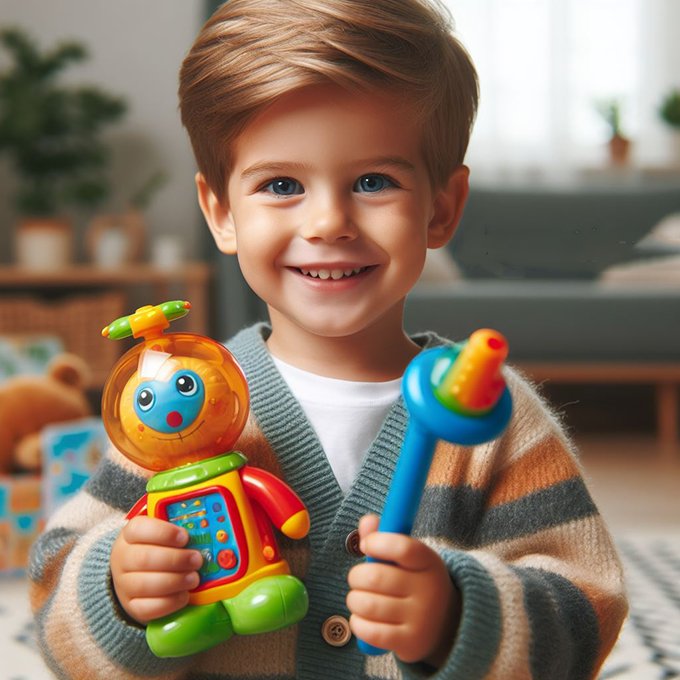
Magic shaker pictures and maze kraze are educational toys that involve shaking and tilting various containers and boards to reveal hidden pictures and solve mazes. They can enhance preschoolers’ cognitive, visual, and problem-solving skills, such as:
- Visual perception, which is the ability to interpret and process visual information.
- Attention, which is the ability to focus and concentrate on a task or stimulus.
- Curiosity, which is the desire to learn and explore new things.
Some examples of magic shaker pictures and maze kraze are:
- Magic shaker pictures, which are plastic containers filled with sand and glitter that reveal hidden pictures when shaken.
- Maze kraze, which are wooden or plastic boards with grooves and holes that contain a metal ball that can be moved by tilting the board.
Some pros and cons of magic shaker pictures and maze kraze are:
- Pros:
- They are simple and fun, and they help preschoolers develop their visual perception, attention, and curiosity.
- They are safe and durable, as they are made of high-quality and sturdy materials, such as plastic, wood, or metal, which can withstand more wear and tear.
- They are affordable and accessible, as they are relatively cheap and widely available on various online and offline platforms, such as Educational Toys Lab, a website that offers various interactive and educational toys and games that use electricity, electronics, and technology.
- Cons:
- They may pose a choking or injury hazard for preschoolers if they are broken, cracked, or opened, as they may release small parts or toxic materials.
- They may lose their shape or function over time if they are exposed to extreme temperatures or pressures, as they may melt, leak, or deform.
- They may not be suitable for all preschoolers, as some may have allergies or sensitivities to certain materials, such as sand, glitter, or metal, or may prefer other types of shaking and tilting toys, such as rattles, balls, or dolls.
Conclusion
As said earlier, educational toys are toys that stimulate learning and development in children, by challenging their minds, bodies, emotions, and social skills. Educational toys can help children acquire new knowledge, skills, and abilities, as well as enhance their existing ones. They can also foster creativity, curiosity, imagination, and problem-solving skills in children.